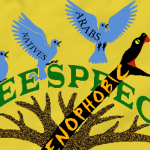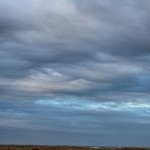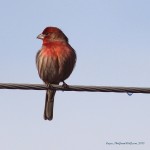Scale is everything.
When we walk across a grassy field, we push the plants aside and brush away errant insects. Except for a few curious children, naturalists, and field biologists, that is the extent of our interaction with that ecosystem, unless we happen to see a deer, bird or other such vertebrate. We’re not required to engage with the moment to moment dramas of tiny invertebrates at our feet. We don’t keep a watchful eye out for marauding dragonflies ready to swoop down to attack as fiercely as any tiger. A sapling is, to us, not a tower so high that it is a region unto itself. All around us animals live and die, and we barely notice because they are so small, and we so large. Therefore, because it is no threat to us, we do not feel the need to exterminate the dragonfly in the same way we have done to the tiger.
This doesn’t make the dragonfly and its neighbors any less important on an immediate level. In fact, some of the smallest beings create the crucial foundations to all the ecosystems that we and other large beings rely on. The ocean would be empty without plankton; plants couldn’t grow without tiny fungal filaments at their roots. Even though most of these beings had lifespans that are only a few breaths of our own, without them we couldn’t be here. Still, for the most part we take them for granted.
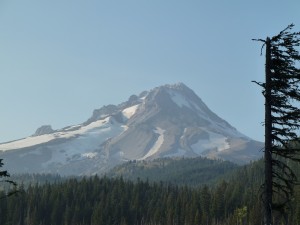
But even the mountains are on the move. They have lifespans, and they die. Erosion wears them away, and they may explode to make way for new volcanic progeny. And many of them aren’t so old. Mt. Hood, my closest giant neighbor, is a scant half a million years old. It has seen no more living dinosaurs and trilobites than I have.
What does this tell me? Simply this: that this world is far from a static thing. Instead, it is made of beings and phenomena that all move forward at their own paces. While the mountain slowly crumbles over millenia, the field mouse is hoping to evade the owl’s talons a few more weeks to deliver one more litter of young. To us, the mouse lives a much shorter life than the mountain. But if you look at the life of the Universe as a whole, the lifespan of a mountain is only scarcely longer than that of a mouse or a mayfly–or a man.
Why is this important? Why does it mean so much to me that the world I know, even the stones, are temporary? Even our Earth is far from the oldest thing in the Universe and will someday die. Shouldn’t this be a depressing thought?
On an immediate scale, yes, it is sad to think of species going extinct in our time when it could have been prevented. And for all the breathtaking beauty of a volcanic eruption, there is still the violent destruction of many lives. The big picture does not negate these.
But spirituality is, in part, a yearning to find meaning in being a part of something much bigger than we are. We feel less isolated and accidental when we have something to look up to (like a mountain, or a deity). Me, I feel the greatest wonder when I think that this sliver of time that I inhabit, with its frogs and nematodes and lilies and craters and magma, is part of the scene shifting in a much, much larger story. I don’t feel sadness, in that moment, that I barely get to witness any of it. I cease to be the center of my universe, and instead I strive to comprehend even the barest scale of the Universe as a whole in time and space.
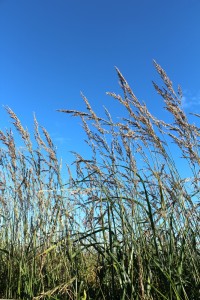
And then they all become important, precious, and worthy of honor while I am here. Mt. Hood in all its majesty is one beautiful dance partner; the tendril of fungus wrapped around a root filament of the cherry tree outside my window is another. The grassy field is suddenly stunning in her verdant gown with the dragonfly pendant so tantalizingly close to the grasshopper brooch, while further off the whitetail doe and the red fox wait their turn.
My dance card is full to overflowing with all manner of beings; I shall never dance alone in this life.


